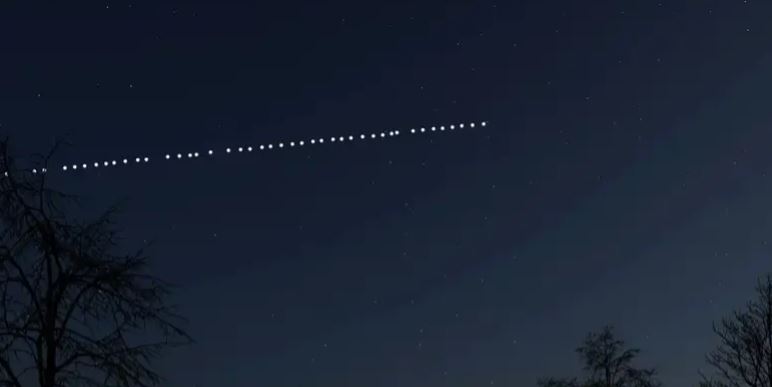advertisement
LEO Satellites: The Galactic Renaissance

In a stunning twist of technological fate, the seemingly faded star of satellite communication has been rekindled to a dazzling brilliance with the advent of Low Earth Orbit (LEO) satellites. Long overshadowed by the ever-dominant fibre-optic networks, satellites are now witnessing an awe-inspiring resurrection, captivating both experts and consumers alike with their celestial promise.
Once dismissed as lumbering giants unable to match the speed and cost-effectiveness of fibre, traditional GEO (Geostationary Earth Orbit) and MEO (Medium Earth Orbit) satellites were relegated to niche applications, gradually losing their shine. However, the rise of LEO satellites has ignited a cosmic upheaval in the world of communication, propelling these orbital pioneers to reclaim their space in the limelight.
Imagine a celestial constellation, a flock of satellites gliding close to our planet, weaving an intricate web of interconnectedness that spans the globe. This is the vision that LEO satellites offer—a promise of unrivalled data transfer speeds, abundant bandwidth, and seamless coverage that reaches the farthest corners of the Earth. It’s as if humanity has unlocked a celestial door, welcoming in an era of boundless, high-speed connectivity.
advertisement
In the past week, I had the privilege of attending two events that shed light on the breathtaking potential of LEO satellites. One such gathering was organised by iSAT Africa who represent OneWeb across multiple markets in Africa. OneWeb, a trailblazing LEO provider boasts an impressive constellation of 648 satellites and 42 Satellite Network Points (SNPs) artfully across 21 countries. With operations spanning both KU and KA bands, OneWeb has paved the way for a diverse array of applications and services, amplifying the cosmic chorus of possibilities.
But OneWeb is not alone in this celestial revolution. Other pioneering LEO satellite providers have also emerged to shape the future of global connectivity. Companies like SpaceX, with its Starlink constellation, and Amazon’s Project Kuiper are among the frontrunners in this cosmic race.
SpaceX, who announced the availability of their service in Kenya this month has embarked on an ambitious mission to deploy thousands of LEO satellites into orbit. Starlink is already operational in South Africa, Rwanda, and Nigeria.
advertisement
Meanwhile, Amazon’s Project Kuiper, helmed by Jeff Bezos, envisions a constellation of 3,236 LEO satellites that will similarly strive to democratize connectivity on a planetary scale. With a focus on serving unserved and underserved communities, Project Kuiper aims to uplift lives and enable access to opportunities that were once beyond reach.
The resurrection of satellite communication heralds a cosmic revolution, promising to bridge the digital divide that has long separated the technologically advanced from the disconnected. With the vast reach of LEO satellites, remote and underserved regions, once abandoned by conventional internet infrastructure, now stand to be embraced by the wave of progress. Education, healthcare, and economic opportunities previously beyond their grasp now shimmer within reach.
Imagine a bustling metropolis at the forefront of technology, where self-driving cars navigate flawlessly through the streets, guided by a celestial symphony of LEO satellites. Connected devices transform the cityscape into an ecosystem of seamless efficiency, where sustainability is not a buzzword but a way of life. The fusion of real-time data from space empowers city planners to make informed decisions, leading to a future where cities flourish harmoniously with nature.
advertisement
However, amidst this cosmic euphoria, we must not lose sight of the cosmic conundrums that accompany this grand spectacle. Building and deploying such vast constellations presents an astronomical engineering feat that demands precision and ingenuity. Moreover, taming the potential perils of space debris necessitates global collaboration, as the growing number of spacefaring nations and private entities must unite under a common celestial cause.
As we venture further into the space-age renaissance of satellite communication, a profound responsibility beckons. Balancing progress with sustainability and mindful stewardship of our cosmic home is an essential cosmic dance that must be embraced. Ensuring the celestial playground remains pristine for generations to come is a testament to the enlightened consciousness that underpins our celestial pursuits.
The revival of satellite communication through LEO satellites is a spectacle that commands both wonder and admiration. The journey to this galactic renaissance has been nothing short of extraordinary, and the trajectory ahead sparkles with endless possibilities. In this grand cosmic dance, we find ourselves at the dawn of a new age.